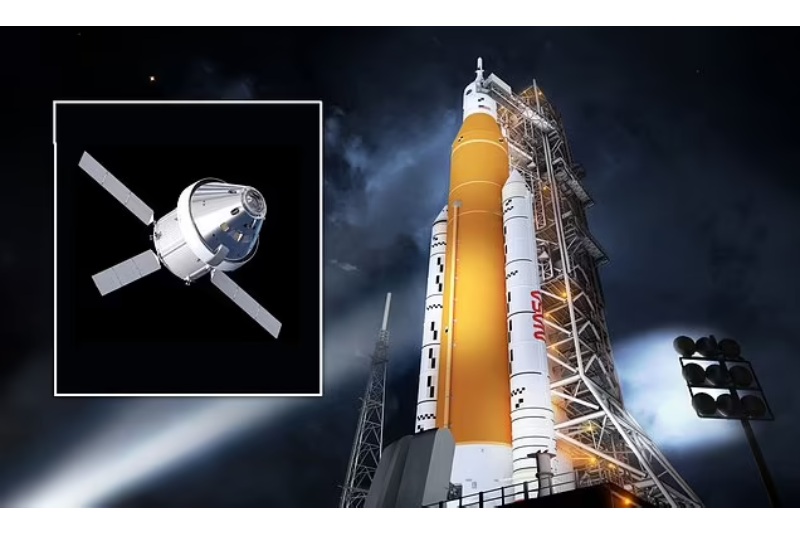The latest generation of NASA’s SLS (Space Launch System) rocket is being built, tested, and assembled as the agency gets ready for its first crewed Artemis missions. Block 1B, a larger and more potent variant of SLS, is scheduled to launch for the Artemis IV mission and has the capacity to carry a crew and substantial hardware to the Moon in a single launch.
“From the beginning, NASA’s Space Launch System was designed to evolve into more powerful crew and cargo configurations to provide a flexible platform as we seek to explore more of our solar system,” said John Honeycutt, SLS Program manager. “Each of the evolutionary changes made to the SLS engines, boosters, and upper stage of the SLS rocket are built on the successes of the Block 1 design that flew first with Artemis I in November 2022 and will, again, for the first crewed missions for Artemis II and III.”
The NASA Michoud Assembly Facility in New Orleans is already in the early stages of production, while the neighboring Stennis Space Center in Bay St. Louis, Mississippi, is getting ready for the improved upper stage’s green run test series.
Updates for More Daring Missions
Although Block 1B shares the same basic core stage, reliable rocket booster architecture, and associated parts as Block 1, it has two significant evolutionary improvements that will further enhance NASA’s workhorse rocket’s capability for Moon and beyond missions. Future Artemis flights could benefit from an adapter for heavier cargos and a more powerful second stage.
“The Space Launch System Block 1B rocket will be the primary transportation for astronauts to the Moon for years to come,” said James Burnum, deputy manager of the NASA Block 1B Development Office. “We are building on the SLS Block 1 design, testing, and flight experience to develop safe, reliable transportation that will send bigger and heavier hardware to the Moon in a single launch than existing rockets.”
The larger, more potent four-engine stage known as the exploration upper stage (EUS) will replace the single-engine interim cryogenic propulsion stage (ICPS), which was utilized to launch the first three Artemis missions to the Moon. Among the various modifications that will enable EUS to support the first eight hours of the mission after launch instead of the present ICPS two hours is a new battery. The various performance and environmental requirements will be taken into consideration during the design and testing of all new hardware and software.
The universal stage adapter that joins the rocket with the Orion spacecraft is the other configuration modification. Additionally, it provides over 10,000 cubic feet (286 cubic meters) of room for the transportation of bulky items, such modules for NASA’s next Gateway outpost, which will be in lunar orbit to sustain crew members in between surface trips and provide special chances for scientific research on the Moon.
When all of those improvements are combined, SLS’s payload capacity will rise from 59,000 pounds (27 metric tons) to about 84,000 pounds (38 metric tons). The Artemis IV core stage is being worked on at nearby Michoud, and the four RL10 engines that will be utilized in the upper stage green run test series at Stennis are finished.
Greater Possibilities
Astronaut explorers now have more launch possibilities on their route to intercept the Moon because to the improved design. Compared to Block 1’s more constrained lunar launch availability, the EUS offers two daily launch possibilities with four times the engines, nearly four times the propellant, and nearly four times the thrust of ICPS.
In addition to other things, Orion’s docking mechanism will let ground crews and astronauts to securely operate the in-orbit stage and retrieve components meant for Gateway from the stage adapter.
Under Artemis, NASA is attempting to place its first international partner astronaut, a woman, and a person of color on the moon. Along with commercial human landing technologies, next-generation spacesuits, rovers on the lunar surface, Orion and the Gateway in orbit around the Moon, and SLS, these components form NASA’s core for deep space exploration. The only rocket capable of launching Orion, humans, and supplies all to the Moon at once is SLS.
Topics #NASA #SLS Mega Rocket Design










